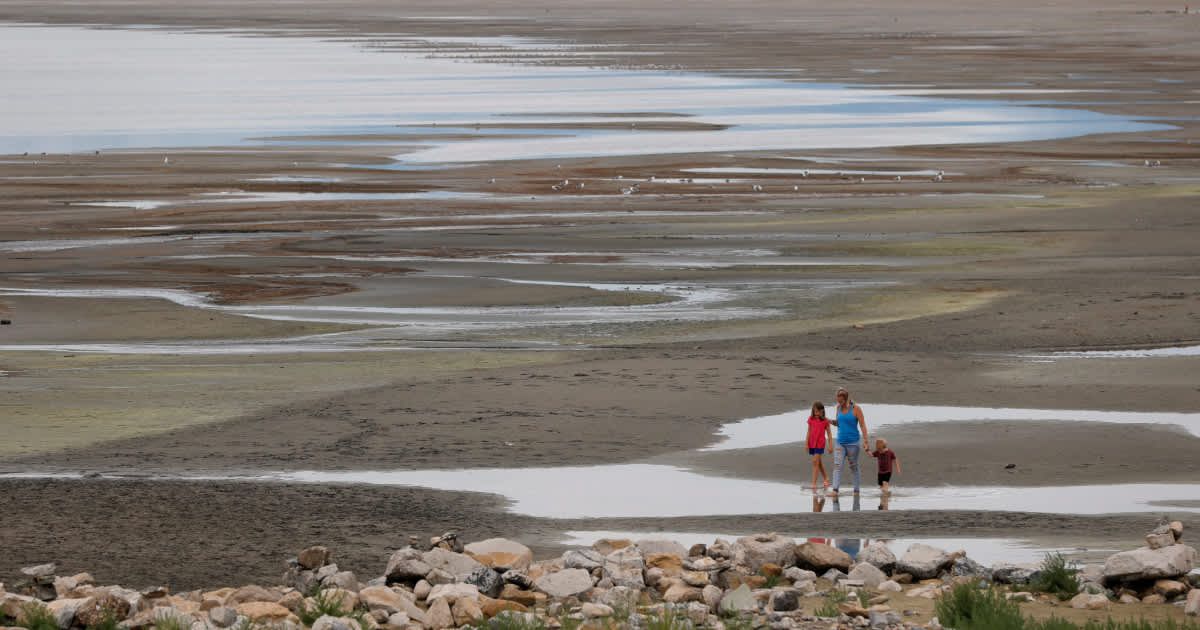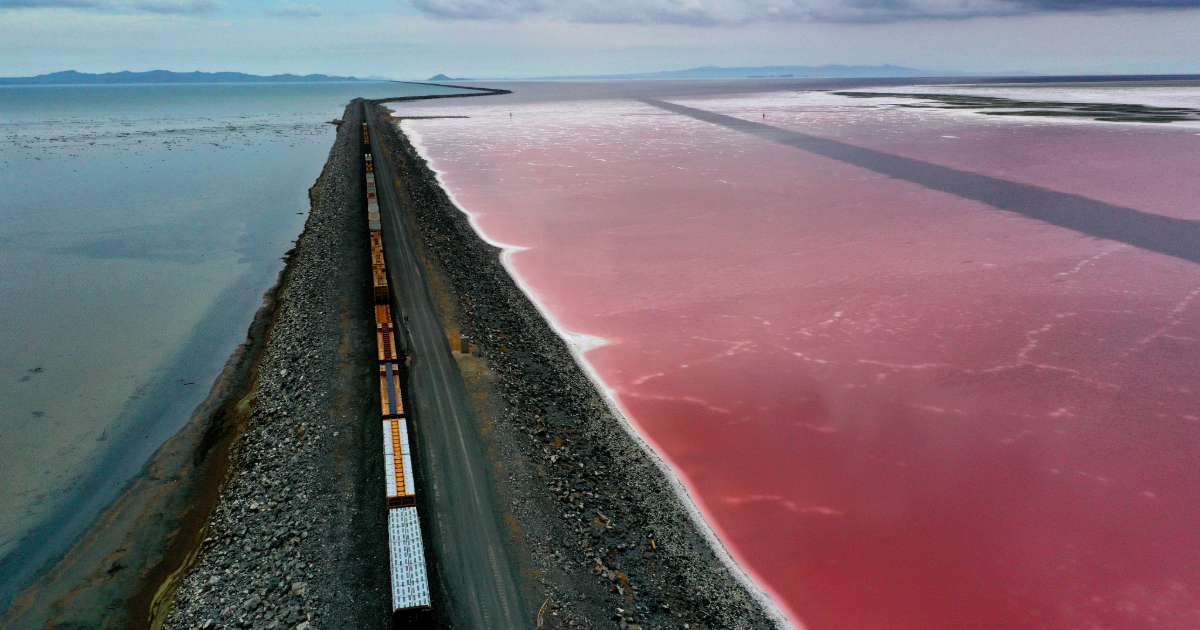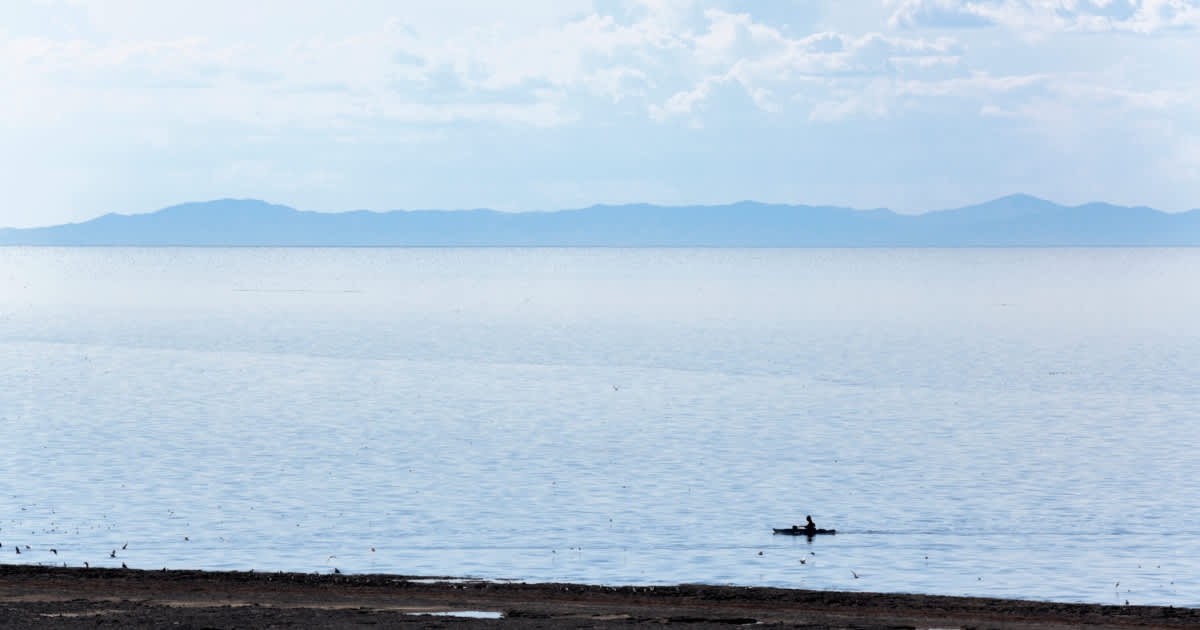Scientists Break Down the Key Decisions That Transformed the Great Salt Lake Forever

Earth has been around for a long, long time. Several pivotal moments have happened throughout the planet's history that have left a huge mark. A new study focuses on the Great Salt Lake in Utah and pinpoints certain human events that changed its features drastically. These events have been described in detail within the journal, Geophysical Research Letters. These two events supposedly took place in the 1800s and 1959. Their impact was so massive that it made the lake behave in ways that it had not for the last 2,000 years.

The insights were gathered through sediment isotope data of the lake, according to Science Daily. The sediments were taken from the lake's bed by Gabriel J. Bowen, a geoscientist working at the University of Utah. "Lakes are great integrators. They're a point of focus for water, for sediments, and also for carbon and nutrients," he shared. "We can go to lakes like this and look at their sediments, and they tell us a lot about the surrounding landscape." Through the results, the expert was able to note many changes that had occurred in the lake and its surrounding watershed, since it formed from the vast freshwater Lake Bonneville, which once moved through the entire northern Utah.
The collected sediment was divided into two sediment cores for examination. The first set covered nearly 8,000 years of history, beginning from the shrinking of Lake Bonneville, while the second set focused on the last few centuries, including the time when European settlers transformed the watershed. The data were mainly based on the investigation of carbon and oxygen isotopes present in the collected sediment, according to Discover Magazine. Carbon isotopes revealed the way organic matter entered and moved through the lake, during the entire period, from its quantity to its pace. Oxygen isotopes showcased the balance that existed between evaporation and inflowing water at various points.
The outcome indicated that human activities like agriculture and railroad construction in the last 200 years essentially altered the lake's chemistry, ecological balance, and salinity to an extent that has never been recorded in human history for the last 2,000 years. The chemical signature in the record pointed towards two main incidents that had the most hand in this alteration. First took place in the mid-19th century, due to the settlement of a Mormon group in the area. They arrived in the area in 1847 and started irrigating the land for agriculture. The increased farming led to the accumulation of more organic matter in the lake, which changed the carbon balance in the lake significantly.
The second event happened in 1959, when authorities constructed the Union Pacific railroad causeway, which separated the lake’s north and south arms. The barrier disturbed the natural water exchange that happened in the lake, and sharply elevated the salinity of the lake as a result. Both these events facilitated significant transformations in the lake, causing it to enter a biogeochemical state that it had not been in for at least the last two millennia.

Today, the Great Salt Lake is highly sensitive to climate change, a fact that could severely hurt the marine beings living inside it, according to Science Daily. Bowen is hopeful that the study will allow other experts to connect the present-day crisis associated with the Great Salt Lake with its history, a lot of which was under wraps before this examination. “We have all these great observations, so much monitoring, so much information, and interest in what’s happening today. We also have a legacy of people looking at the huge changes in the lake that happened over tens of thousands and hundreds of thousands of years. What we’ve been missing is the scale in the middle,” said Bowen.
MORE ON GREEN MATTERS
Utah's Iconic Great Salt Lake May Be Drying Up, As Droughts Continue to Worsen
The Great Salt Lake May Not Be Around Much Longer — Here’s Why
Here’s Which State Will Be the Least Ravaged by Climate Change by 2050